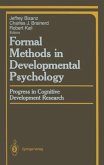One of the most amazing things in early development is how children find their way in their growing number of memories. How is it possible for example that a young child can vividly remember a specific dialog and the grips carried out during building a stone dam together with another child that has been met once before? In remembering such experiences, it is not only necessary to remember the specific event, its place, its course and the persons that were present, but it is also necessary to somehow remember who said what and who did what. In two experiments I examine how young children learn to differentiate between the person sources of their memories and what favorable conditions and factors are for such early source monitoring abilities. The book is addressed to everybody who is fascinated by the question of how young children differentiate between the sources of their memories.








